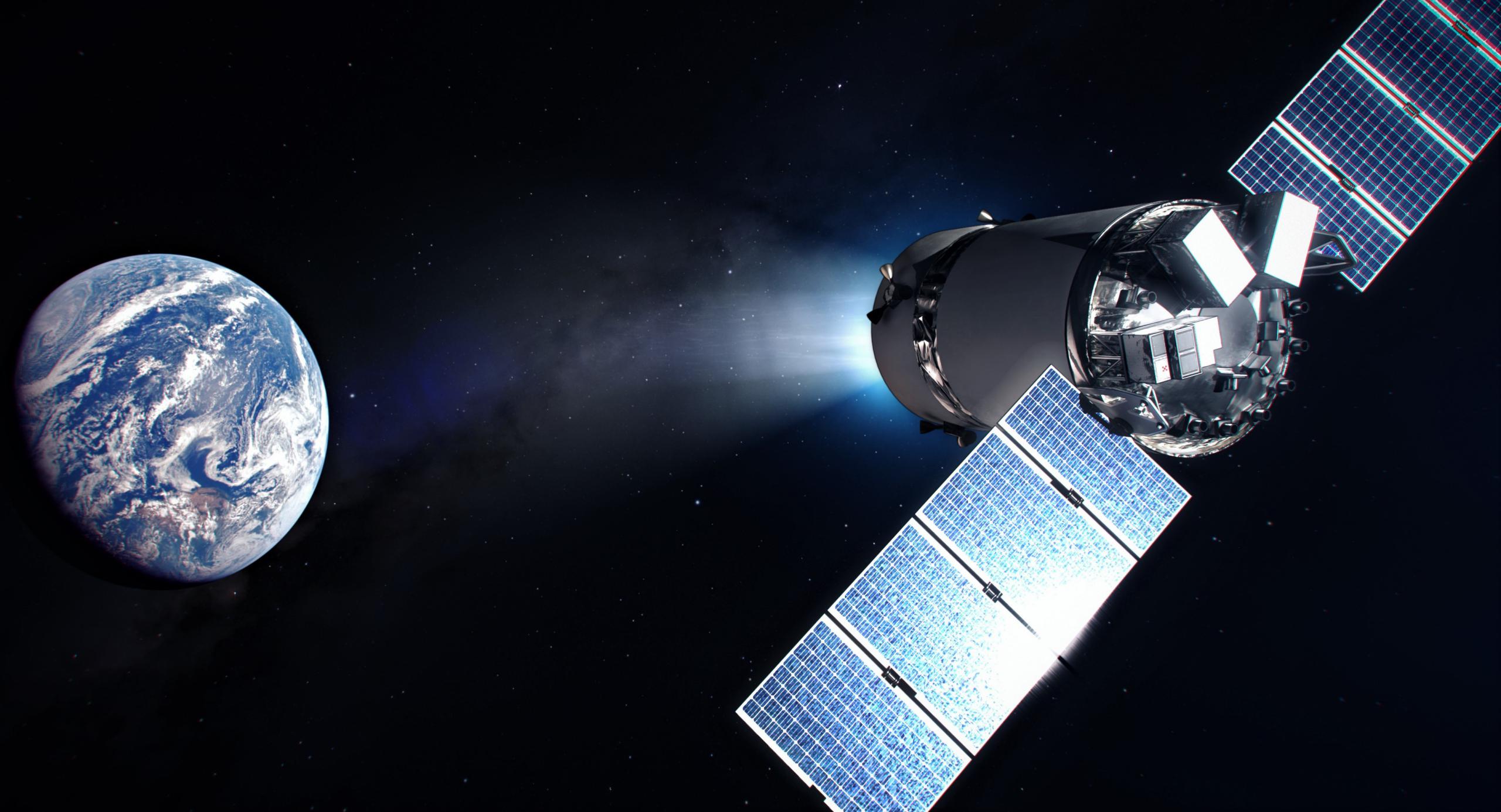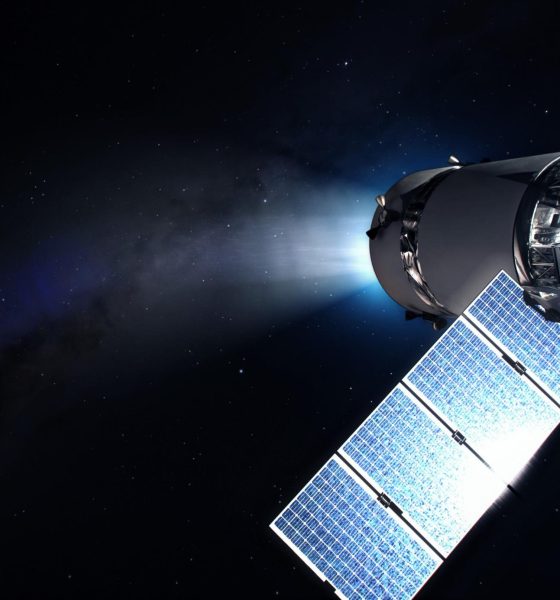

News
SpaceX Dragon XL could double as a crew cabin for lunar space station
A recent modification to SpaceX’s Dragon XL lunar cargo resupply contract with NASA suggests that the spacecraft could be used as an extra crew cabin and bathroom at a lunar space station known as Gateway.
The contract modification was made around April 1st of this year and provided SpaceX around $121,000 to complete the latest study on the potential utility of its expendable Dragon XL spacecraft beyond the primary goal of resupplying a space station orbiting the Moon. Designed to deliver at least five metric tons (~11,000 lb) of pressurized and unpressurized cargo to Gateway, Dragon XL will launch on SpaceX’s own Falcon Heavy rocket – currently the only super heavy-lift launch vehicle in operation – and meant to heavily borrow from hardware and systems already developed for Crew and Cargo Dragon.
NASA first announced its selection of SpaceX for the Gateway Logistics Services (GLS) contract back in March 2020. More than a year later, very little has been said (or visibly done) to progress from that announcement to a true contract – an unusually long period of inactivity for such a significant program.
Of note, as recently as April 2021, NASA officials made it clear that they were still in the cryptic process of “reviewing” the Artemis program, leading to such a long delay between the GLS award announcement and finalization of an actual contract with SpaceX. Of note, back when it was announced, NASA’s nominal plan was to begin Dragon XL cargo deliveries as early as 2024 to support the Artemis Program’s first crewed Moon landing attempt.
Since then, however, other crucial aspects – namely the concept of operations and Human Lander System (HLS) meant to carry astronauts to and from the Moon – have evolved significantly. Weeks after NASA’s GLS announcement, the space agency awarded approximately $1 billion to three prospective HLS providers – SpaceX, Dynetics, and a team led by Blue Origin. A little over a year later, NASA announced a shocking decision to award that initial HLS Moon landing demonstration contract to SpaceX and SpaceX alone.
More or less simultaneously, NASA it made it clear that it was seriously studying the possibility of performing Artemis-3 – the first crewed Moon landing attempt in half a century – without Gateway. Along those lines, the SLS-launched Orion spacecraft and HLS lander (a custom variant of SpaceX’s Starship) would dock directly in lunar orbit instead of separately docking to Gateway to transfer crew. NASA’s decision to solely select Starship as its future Moon lander was so surprising in large part because of how starkly the vehicle’s potential capabilities contrast with the rest of the Artemis Program.
As many have already noted, the very existence of a Starship with capabilities close to what SpaceX is working towards – now a practical inevitability for the company to complete its HLS contract – brings into question the architecture NASA has proposed for Artemis. Currently, the nominal plan is to launch astronauts into an exotic high lunar orbit with NASA’s own SLS rocket and Orion spacecraft – an inconvenient orbit only needed to make up for said spacecraft’s shortcomings. Prior to recent developments, Orion would then dock with Gateway. The HLS vehicle would follow and crew would eventually transfer to the lander, which would then carry 2+ astronauts to and from the surface of the Moon and re-dock with Gateway, followed by Orion returning those astronauts to Earth.
Given that Starship offers enough pressurized volume to rival even the vast International Space Station (ISS) in a single launch, the entire concept of Gateway – an almost inhumanely tiny space station – becomes dubious. If Orion also doesn’t need Gateway to transfer its astronauts to the lander, which NASA has all but confirmed, it’s difficult to see what value Gateway could offer outside of a very expensive technology demonstration. Including a planned Falcon Heavy launch of the first two Gateway segments, station production, and the possible need for expensive Dragon XL cargo deliveries, Gateway could easily end up costing NASA $4-5 billion before it hosts a single astronaut.
NASA is already deeply concerned about the apparent likelihood of Congress systematically underfunding the HLS and Artemis programs outside of SLS and Orion, going as far as selecting just a single HLS provider after clearly indicating a desire for redundancy given enough funding. NASA’s HLS contract with SpaceX is expected to cost around $2.9 billion. The next cheapest option – Blue Origin’s proposal – would reportedly cost around $6 billion. In other words, if NASA were able to stop work and Gateway and redirect that funding elsewhere, it could almost already afford two HLS providers without a larger budget.
Given that NASA has selected SpaceX for HLS and GLS, it’s not impossible to imagine that the space agency is growing increasingly aware that Gateway and Dragon XL look more than a little redundant beside the Starship vehicle NASA itself is now funding SpaceX to realize. For now, though, work on all three programs continue. Most recently, NASA and SpaceX are studying the possibility of adding a toilet and using Dragon XL as an extra crew cabin and bathroom to augment the tiny habitable volume of Gateway’s lone habitat. Only time will tell where the cards ultimately fall.

News
Tesla FSD fleet is nearing 7 billion total miles, including 2.5 billion city miles
As can be seen on Tesla’s official FSD webpage, vehicles equipped with the system have now navigated over 6.99 billion miles.

Tesla’s Full Self-Driving (Supervised) fleet is closing in on almost 7 billion total miles driven, as per data posted by the company on its official FSD webpage.
These figures hint at the massive scale of data fueling Tesla’s rapid FSD improvements, which have been quite notable as of late.
FSD mileage milestones
As can be seen on Tesla’s official FSD webpage, vehicles equipped with the system have now navigated over 6.99 billion miles. Tesla owner and avid FSD tester Whole Mars Catalog also shared a screenshot indicating that from the nearly 7 billion miles traveled by the FSD fleet, more than 2.5 billion miles were driven inside cities.
City miles are particularly valuable for complex urban scenarios like unprotected turns, pedestrian interactions, and traffic lights. This is also the difference-maker for FSD, as only complex solutions, such as Waymo’s self-driving taxis, operate similarly on inner-city streets. And even then, incidents such as the San Francisco blackouts have proven challenging for sensor-rich vehicles like Waymos.
Tesla’s data edge
Tesla has a number of advantages in the autonomous vehicle sector, one of which is the size of its fleet and the number of vehicles training FSD on real-world roads. Tesla’s nearly 7 billion FSD miles then allow the company to roll out updates that make its vehicles behave like they are being driven by experienced drivers, even if they are operating on their own.
So notable are Tesla’s improvements to FSD that NVIDIA Director of Robotics Jim Fan, after experiencing FSD v14, noted that the system is the first AI that passes what he described as a “Physical Turing Test.”
“Despite knowing exactly how robot learning works, I still find it magical watching the steering wheel turn by itself. First it feels surreal, next it becomes routine. Then, like the smartphone, taking it away actively hurts. This is how humanity gets rewired and glued to god-like technologies,” Fan wrote in a post on X.
News
Tesla starts showing how FSD will change lives in Europe
Local officials tested the system on narrow country roads and were impressed by FSD’s smooth, human-like driving, with some calling the service a game-changer for everyday life in areas that are far from urban centers.

Tesla has launched Europe’s first public shuttle service using Full Self-Driving (Supervised) in the rural Eifelkreis Bitburg-Prüm region of Germany, demonstrating how the technology can restore independence and mobility for people who struggle with limited transport options.
Local officials tested the system on narrow country roads and were impressed by FSD’s smooth, human-like driving, with some calling the service a game-changer for everyday life in areas that are far from urban centers.
Officials see real impact on rural residents
Arzfeld Mayor Johannes Kuhl and District Administrator Andreas Kruppert personally tested the Tesla shuttle service. This allowed them to see just how well FSD navigated winding lanes and rural roads confidently. Kruppert said, “Autonomous driving sounds like science fiction to many, but we simply see here that it works totally well in rural regions too.” Kuhl, for his part, also noted that FSD “feels like a very experienced driver.”
The pilot complements the area’s “Citizen Bus” program, which provides on-demand rides for elderly residents who can no longer drive themselves. Tesla Europe shared a video of a demonstration of the service, highlighting how FSD gives people their freedom back, even in places where public transport is not as prevalent.
What the Ministry for Economic Affairs and Transport says
Rhineland-Palatinate’s Minister Daniela Schmitt supported the project, praising the collaboration that made this “first of its kind in Europe” possible. As per the ministry, the rural rollout for the service shows FSD’s potential beyond major cities, and it delivers tangible benefits like grocery runs, doctor visits, and social connections for isolated residents.
“Reliable and flexible mobility is especially vital in rural areas. With the launch of a shuttle service using self-driving vehicles (FSD supervised) by Tesla in the Eifelkreis Bitburg-Prüm, an innovative pilot project is now getting underway that complements local community bus services. It is the first project of its kind in Europe.
“The result is a real gain for rural mobility: greater accessibility, more flexibility and tangible benefits for everyday life. A strong signal for innovation, cooperation and future-oriented mobility beyond urban centers,” the ministry wrote in a LinkedIn post.
News
Tesla China quietly posts Robotaxi-related job listing
Tesla China is currently seeking a Low Voltage Electrical Engineer to work on circuit board design for the company’s autonomous vehicles.

Tesla has posted a new job listing in Shanghai explicitly tied to its Robotaxi program, fueling speculation that the company is preparing to launch its dedicated autonomous ride-hailing service in China.
As noted in the listing, Tesla China is currently seeking a Low Voltage Electrical Engineer to work on circuit board design for the company’s autonomous vehicles.
Robotaxi-specific role
The listing, which was shared on social media platform X by industry watcher @tslaming, suggested that Tesla China is looking to fill the role urgently. The job listing itself specifically mentions that the person hired for the role will be working on the Low Voltage Hardware team, which would design the circuit boards that would serve as the nervous system of the Robotaxi.
Key tasks for the role, as indicated in the job listing, include collaboration with PCB layout, firmware, mechanical, program management, and validation teams, among other responsibilities. The role is based in Shanghai.
China Robotaxi launch
China represents a massive potential market for robotaxis, with its dense urban centers and supportive policies in select cities. Tesla has limited permission to roll out FSD in the country, though despite this, its vehicles have been hailed as among the best in the market when it comes to autonomous features. So far, at least, it appears that China supports Tesla’s FSD and Robotaxi rollout.
This was hinted at in November, when Tesla brought the Cybercab to the 8th China International Import Expo (CIIE) in Shanghai, marking the first time that the autonomous two-seater was brought to the Asia-Pacific region. The vehicle, despite not having a release date in China, received a significant amount of interest among the event’s attendees.








